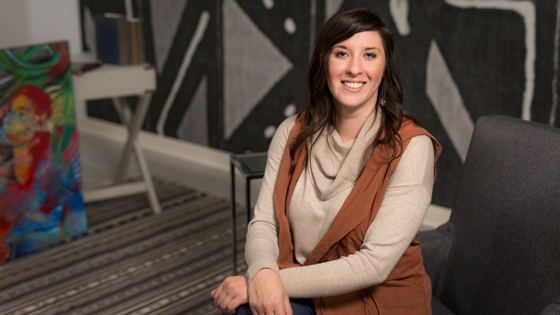Understanding Art Therapy As An Adult

By Stephanie Gibart
The best guess anyone ever gave me when describing art therapy comes from an older man who said with a perplexed look: “You’re an art therapist—so you give therapy to art?” I imagine this looks something like putting a piece of art on the couch and asking about its relationship with its mother.
He’s not alone in his confusion. I’ve found that people understand the concept of a “therapist”, but oftentimes, when you say “art therapist”, befuddlement ensues.
Let’s get some clarity: An art therapist gives therapy with art. I ask questions of my clients and we chat, and they ask questions of me and of their artwork as it unfolds on the canvas before them. Most often, it’s an enlightening and awareness-raising experience for both of us.
I am reminded of how Picasso said that “Every child is an artist. The problem is how to remain an artist when you grow up.” Kids are remarkable in their fearless approach to expressing their creativity, as well as their tendency to ask question upon question as their brains gobble up knowledge about themselves, others, and the world.
We might not all have been young Picassos, but as you look back, can you remember the feeling of sitting down with a blank piece of paper and your favorite pencil, crayons, or markers? Can you remember when or why you stopped sitting down to exercise your urge to create something unique to your feelings in that very moment? Maybe your creativity tended to reflect concrete memories of people, places, and things in your life; or maybe you always leaned toward the abstract, and colors, lines, shapes, and sizes helped you get your feelings out. Maybe you created a little bit—or a lot—or both.
It’s not that adults don’t know how to create. We do. We mastermind careers, design our living spaces, grow gardens, and battle back the clutter of offices, bedrooms, cars, and more. Perhaps in becoming busy with all of the above, we forget how the simple act of expressing ourselves artistically can lead to fresh perspectives on our dreams, developing our goals, and relieving anxiety. Adult coloring books give relief to some, but art therapy is different; this is about what can happen when you’re facing a blank canvas.
Whatever the reasons, my job is not to judge, but first to beg the question: Why not start being creative in that way once again?
Adults can benefit from art therapy in the way that it opens us up to our emotions. Rather than relying solely on words, logic, and rationale to reckon with feelings, ideas, and memories, we can speak to those things through a creative process. Paying attention to how you feel when you begin and how the questions you ask—and answers you contemplate—drive colors, lines, shapes, and the movement of your brush reveals truths that our words often fall short of expressing.
And at the end, with a tangible object to reflect our reckonings, it is your choice to save it, frame it, destroy it, or change it. Because in art therapy, you are in control, and my role is to facilitate finding that elusive truth.
Artist and Art Therapist, Stephanie Gibart, hosts 2 sessions of her Create, Destroy, Transform art therapy workshop at Elle during Third Ward Gallery Night on April 20th. Find out more and reserve your spot.


Comments are closed.